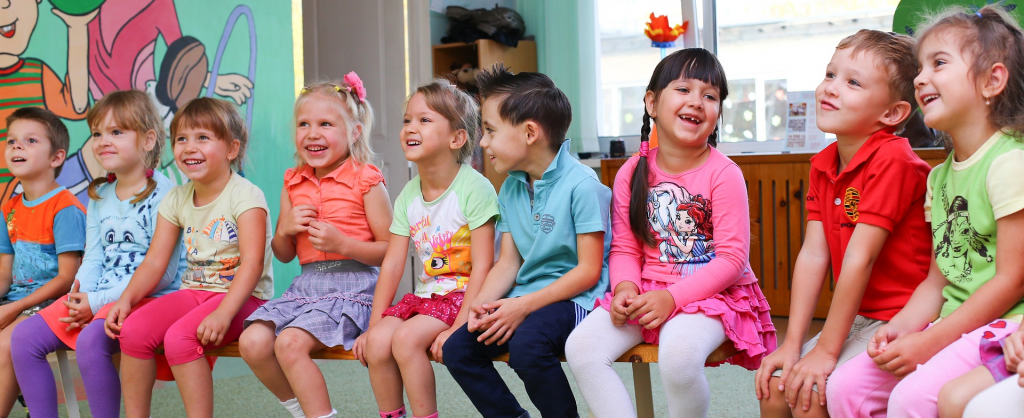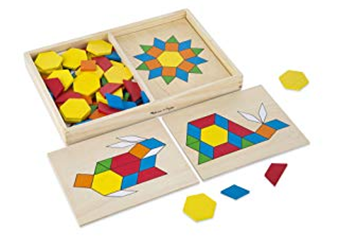
Math consists of three major components: number sense, arithmetic, and geometry. It also consists of two subcomponents: units and time.
In each grade, your child will learn about some or all of these components. For your child to succeed in math, you need to understand that your child has to focus on these components at his or her grade level.
1.1 Number sense
If you are reading this article and have a child in Pre-K, you are lucky, as you have time to prepare now, instead of having to recover later on.
Pre-K students need to focus on number sense, especially through physical experiences.
Number sense is the base of math and all science and engineering subjects. So, if your child does not have a solid understanding of what numbers mean, your child will not be equipped to succeed in math and other STEM subjects down the line.
Many parents think that number sense is easy to grasp and that there is no need to focus on early education efforts. However, our experiences show that such is not the case. Approximately half of the students do not demonstrate a solid understanding of number sense and struggle in first and fourth grade. Students who built a solid understanding of number sense by playing with physical objects appear to thrive.
We advise you to have your child practice counting using ten or more of the same object. The point of having your child use objects of the same size and weight is so that your child can understand that each number consists of multiples of the same size. Using identical objects helps children learn the number line and rounding in first grade, large numbers in fourth grade, and more complex skills later on.
There are three points that your child needs to intuitively understand:
1) The difference between two consecutive numbers is always the same: 1.
2) The tens place shows how many tens there are.
3) One ten is equal to ten ones.

If you can teach your child that 10 can be the sum of 1 and 9, 2 and 8, 3 and 7, 4 and 6, and 5 and 5, it will help your child a lot in kindergarten and first grade. Simple toys, such as those pictured in the center and on the right side in the graphic above, can help your child practice forming sums.
1. 2 Arithmetic
A child can learn single-digit addition and subtraction up to 9 + 9 using tangible objects, such as fingers, blocks, and beads. This is also an opportunity to practice counting and understanding the meaning of “=” sign.
1.3 Geometry
Providing your child plenty of playtime with 2D and 3D toys helps your child acquire and improve figurative and special reasoning skills. Simple toys, such as the blocks pictured in the above graphic, improve special reasoning skills significantly. The toy pictured below assists in developing and improving figurative sense.
It is essential to give your child enough time to play and very positive feedback, no matter what he or she creates. Minimize disruptions – you will be surprised at how long your child can play with these relatively simple toys. When presenting toys to your child, provide one toy at a time and keep the others out of sight. This simple “out of sight” trick will help your child learn to focus on one thing.

In kindergarten, number sense still takes priority, followed by arithmetic and geometry.
2.1 Number sense
Starting in kindergarten, it is very important for your child to demonstrate proficiency in number sense. You must also understand that if your child is not entirely proficient, this does not equate to your child completely lacking an understanding of number sense. Kindergarten goals in math are as follows:
1) Number sequence
Your child needs to fully understand number sequence and be able to count to 100. Your child must also be able to recite the sequence of tens and understand the concept of zero.
i) 1 to 10
ii) 10, 20, 30, 40, 50, 60, 70, 80, 90, 100
iii) 100, 200, 300, 400, 500, 600, 700, 800, 900, 1000
iv) 11 to 20
v) 0
2) The meaning and visualization of numbers
Your child intuitively understands that each digit shows how many “chunks” are represented by the digit and can mentally visualize them. For instance, 234 breaks down into two hundreds, three tens, and four ones. Your child should be able to mentally visualize the image below (or something similar). Your child also needs to be able to convert these visual representations into numbers.

3) Even and odd number series
Your child should understand the concept of even and odd numbers and be able to recite these series flawlessly.
4) Combinations of 10
In Pre-K and early kindergarten, your child becomes familiar with combinations of 10 using objects such as fingers, blocks, and beads to count. It is very important for your child to gain visual and tangible exposure to counting. However, by the end of kindergarten, your child needs to have these combinations memorized.
This is an early challenge that your child will encounter – memorizing something that is not directly associated with an object. Please do not rush. Take your time, maintain a positive attitude at all times, and do not use discouraging words or show frustration to your child. It is key for this exercise in memorization to be a positive experience. Do practice relentlessly until your child has mastered the concept.
Your child needs to become capable of answering these questions immediately, without counting and, eventually, without thinking. Memorizing the combinations helps your child a lot when your child study carryover in addition and regrouping in subtraction.
5) Number line
Once your child has mastered the four goals above, try introducing your child to the number line. The number line helps your child understand that numbers, such as 1, 2, 3, and 4, are only points on a number line, with the same distance between consecutive numbers. Start with a unit size of 1 and then increase to 10, 2, and 5 as your child becomes familiar with the number line.
The number line is a very important tool in helping your child understand rounding, addition, subtraction, decimals, division, and graphing. The number line becomes part of the curriculum in first grade, but there is no need to wait. Many children who played extensively with tangible objects in Pre-K could understand the number line naturally, as a 2D representation of the tangible objects they used to count.
2.2 Arithmetic
Though an ambitious goal, it is preferable for your child to have mastered single-digit addition by the end of kindergarten. The minimum goal is to master single-digit additions that yield a sum of 10 or less.
Let’s look at what mastery means in this context: To master single-digit addition means that your child can immediately name the sum of any combination of single digits without counting, thinking, or making mistakes. To achieve this, your child needs to memorize 45 combinations. You may think this is a lot, but the reality is that if you would like your child to be successful in math and STEM subjects, mastering these combinations is required and can be achieved in two weeks with proper training.
For subtraction, it is ideal for your child to know the difference when subtracting a single-digit number from a value of 10 or less. Ideally, your child would be able to subtract single-digit values from a starting value of 18 or less.
2.3 Geometry
Geometry is the third priority. The goals in geometry are for your child to understand the following:
1) The names of 2D and 3D shapes, e.g. triangle, square, rectangle, quadrilateral, pentagon, hexagon, circle, cylinder, cone, sphere, and cube
2) Comparisons between shapes, such as size (large/small) and length (long/short, tall/short, wide/narrow)
This can be easily achieved if you communicate with your child using proper terminology from Pre-K onward. You can even use terms like an isosceles triangle, equilateral triangle, rhombus, trapezoid, parallelogram, and prism. You can explain the relationships between these figures using a Venn diagram. Many of our students understand Venn diagrams without issue.
2.4 Time
Reading time is not a priority, but it is better to start early, as reading time is complicated. Please put analog clocks in your home to familiarize your child with them. Before starting to learn how to read time, your child will only know the decimal system and may be easily confused by the duodecimal system. Start by reading hours. Reading minutes is more challenging, as the base is 60 and the amount of minutes on a clock is five times the amount of hours. For kindergarteners, being able to read the exact hours is enough. If your child can read 15, 30, and 45 minutes, that would be more than enough.
